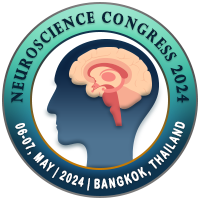.jpg)
Kwang-Ryeol Kim
Daegu Catholic University, Republic of KoreaTitle: Comparison of the Difference between Vertebral Height Restoration and Global Sagittal Alignment after Percutaneous Vertebroplasty in Thoracolumbar Junction (Unilateral versus Bilateral Approach)
Abstract
Objective: Percutaneous vertebroplasty reduces acute pain in osteoporotic vertebral compression fracture and helps a quick return to daily life. This procedure is usually performed using a bilateral pedicles, but with recent advances in equipments, it is also possible to perform the procedure through a unilateral approach. Therefore, we aimed to compare the differences in radiological and clinical prognosis between the two approaches.
Methods: Among 142 patients who underwent spinal cement augmentation from March 2020 to February 2023, the study was conducted on a total of 40 patients underwent single-segment vertebroplasty at the thoracolumbar junction (T10-L2), 22 unilateral, 18 bilateral. Clinical parameters included age, sex, osteoporosis, date of diagnosis to surgery, operation time, pain (VAS) and functional impairment (EQ5D) in pre/postoperatively. And radiological parameters included vertebral body height and global sagittal alignment in pre/postoperatively and the presence and type of complication were analyzed.
Results: Vertebral body height increased in both groups compared to before surgery (anterior: 21.13 to 23.94, middle: 17.23 to 19.90, posterior: 28.60 to 30.45, mm), but there was no change in global sagittal alignment. Pain (7.8 to 3.3, VAS) and functional improvement also showed improvement (0.51 to 0.72, EQ5D). Between two groups, the operation time was shorter in the unilateral group (23.50 vs 37.33, minutes) and the amount of PMMA injection was greater in the bilateral group. (6.25 vs 4.93, cc). There were no significant differences between the two groups in the change of vertebral body height, sagittal angles, and clinical parameters.
Conclusion: Vertebroplasty is effectible in reducing pain and improving functionality in the acute phase, as well as restoring vertebral body height. Since there are no clinical or radiological differences depending on the surgical approach, a unilateral approach may be a good choice as it can shorten the surgical time.
Biography
Kwang-Ryeol Kim has completed his B.D. at the age of 24 years from
Keimyung University, Republic of Korea in 2010 and M.D. at the age of 27 years
from same University. He plans to pursue Ph.D. in 2024 from Kyungpook National
University, Republic of Korea. He completed his residency in Neursurgery
department at Keimyung University Dongsan Medical Center(DSMC) until 2015. He
served as a Military Doctor from 2015 to 2018. He completed a Spine fellowship
at DSMC in 2018 and a Spine fellowship at Gangnam Severance Hospital in 2019.
In 2020, he began his careear as an assistant professor at the Catholic
Kwandong University, International St. Mary’s Hospital, Republic of Korea. In
2023, he moved to Daegu Catholic University Hospital, Republic of Korea. He is
the Spine specialist of Neurosurgery department of Daegu Catholic University,
Republic of Korea. He has 14 publications that have been cited over 130 times,
and his publication h-index is 7. He has been serving as an reviewer of several
reputed journals. (Spine, Global spine journal, Neurospine, etc.)

